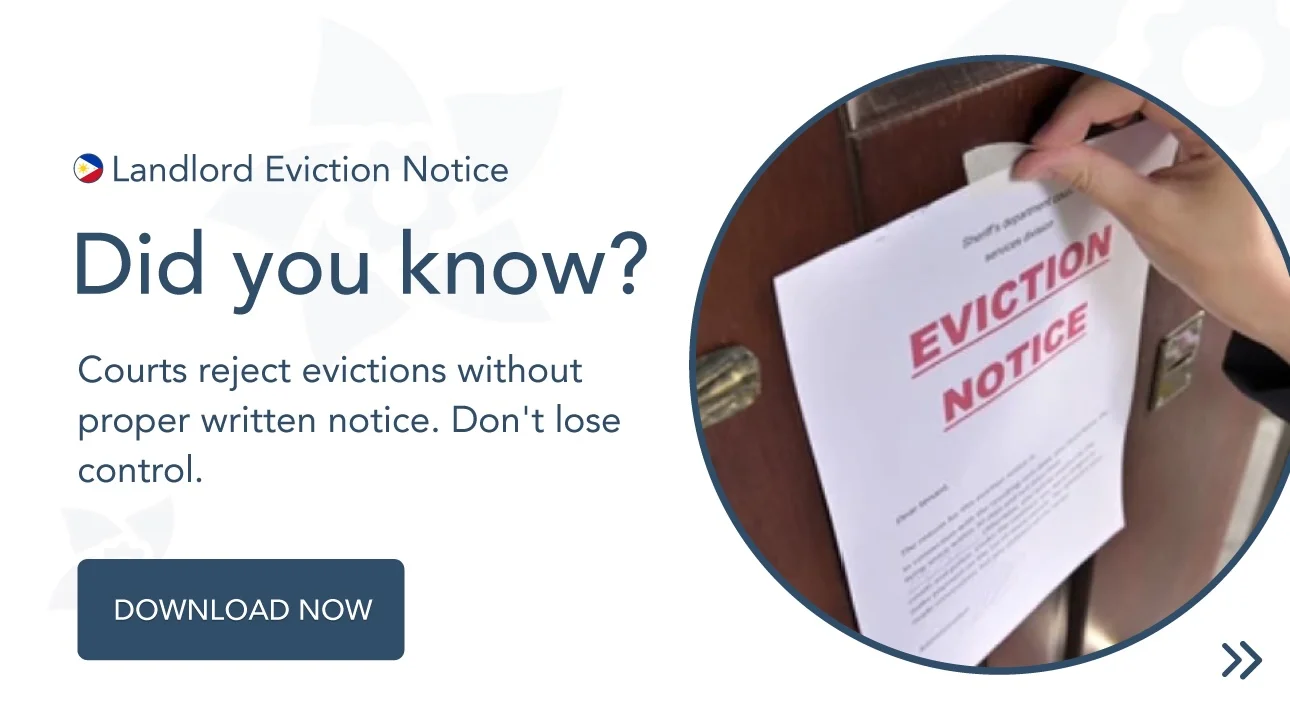Ready to use legal template
Drafted by experienced lawyers
Compliant with Filipino law
Ready to use legal template
Drafted by lawyers
Compliant with Filipino law
Home › Rent your property › Eviction notice
Learn more about Eviction Notice Letter in Philippines
If a dispute occurs during the execution of a Residential Lease, the landlord may be forced to issue the tenant with an Eviction Notice alerting him that he must remove the premises within a certain time limit. Themis Partner can help you prepare a customized Eviction Notice. If you’ve noticed that your tenant hasn’t paid his rent despite many warnings from you, has caused damage to your house, has rented the property without authority, or has brought in pets without permission, Themis Partner may be able to assist you. You can consult other documents that are useful when you Rent your Property such as the Lease Agreement, the Rental Inspection Report or the Notice to Vacate.
Table of contents
What is an Eviction Notice Letter?
While state rules vary, most legal evictions start with an Eviction Notice. If your tenant has violated their Lease Agreement by failing to pay rent or otherwise failing to comply with the lease terms, you may use an Eviction Notice to alert them that you will take legal action to remove them if they do not comply with the lease terms. It is critical to recognize that this legal document does not have the authority to compel renters to relocate. A court order is still required to lawfully evict a renter. Eviction Notices are also referred to as Eviction Letters, Notice to Vacate Letters, and Notice to Quit. If this is your first eviction, you should speak with an attorney to establish the best course of action for your particular situation. In general, keeping detailed records and properly completing paperwork can make evicting a tenant less stressful. Learn how to use our free Eviction Notice template, what to include, and how to protect the rights of your landlord or Property management.
When to send an Eviction Notice?
Regardless of how angry you are, you should not attempt to evict a tenant without first initiating legal action and submitting the proper paperwork. It is vital that your discussions be fully documented and that you follow all applicable laws. If you go rogue and do things like turn off utilities, change locks without a court order, or enter a unit without proper notice, you may find yourself on the wrong side of a legal struggle. Excessive phone calls, text messages, or notes should be avoided as well, as they may be interpreted as harassment. It is recommended that you engage a lawyer and go through the entire eviction procedure.
When properly drafted, an Eviction Notice letter can help protect you as a landlord or property manager by:
| ➤ Recording the tenant's failure to comply with the lease terms. |
| ➤ Giving the tenant a deadline to fix the issue. |
| ➤ Notifying the renter in writing of your intention to seek further legal action. |
| ➤ Even if you do not have a formal lease, you must follow the legal process, which begins with an Eviction Notice. |





